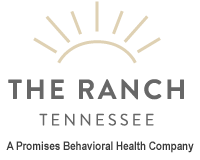Stress, anxiety and the blues are all feelings that can be expected after a traumatic event, but a more serious condition called post-traumatic stress disorder (PTSD) may be at play if symptoms like nightmares, avoidance, mood swings and poor concentration persist for more than a month after the triggering event. PTSD is not impossible to treat, but it can also be challenging to treat. Like all mental health concerns, there is no magic cure that takes away the symptoms as easily as, say, ibuprofen relieves a mild headache. Cognitive behavioral therapy, or CBT, has long been the go-to method of treating PTSD, with varying results among individuals. Researchers remain dedicated to discovering new and effective treatment methods for this relatively common affliction. Among them are PTSD medications, alternative therapies and methods to support an overall healthy mind.
PTSD Medications
Although not a cure-all, PTSD medications are useful in reducing symptoms like depression, anxiety and mood swings. They are best used in conjunction with psychotherapies like talk therapy or CBT. The most common classes of PTSD medications are SSRIs (selective serotonin reuptake inhibitors), SNRIs (serotonin-norepinephrine reuptake inhibitors), mood stabilizers and atypical antipsychotics. Other medications show promise for the treatment of PTSD. For example, a high blood pressure medication called prazosin was recently found to be effective at reducing the incidence of nightmares in people struggling with PTSD.
Eye Movement Desensitization and Reprocessing
Eye Movement Desensitization and Reprocessing (EMDR) is a therapeutic modality that taps into the brain’s innate ability to process traumatic events during the rapid eye movement (REM) portion of the sleep cycle. In the case of PTSD, this natural cycle is thought to be interrupted, leading to a rehashing of events in the form of nightmares, flashbacks, avoidance and anxiety. Therapists seek to recreate REM by asking clients to think about a specific aspect of their trauma while following a pointer with their eyes. Although it sounds rather unusual, EMDR is gaining traction as a very effective treatment for PTSD and other trauma disorders.
Somatic Experiencing
The premise behind somatic experiencing is similar to EMDR, in that the brain’s ability to process a traumatic event was interrupted, leading to the onset of PTSD. Somatic experiencing seeks to resolve this issue by focusing on physical, almost imperceptible reactions to trauma, slowly healing the body and mind together.
Mindfulness and Relaxation Techniques
Mindfulness is the art of keeping one’s thoughts in the present moment rather than dwelling on the past or worrying about the future. Mindfulness helps to keep PTSD sufferers centered and calm when anxiety creeps in. Other relaxation techniques are useful for treating PTSD, especially in conjunction with psychotherapy, and include meditation, yoga, massage and acupuncture. In short, a PTSD diagnosis may be upsetting, but there are quite a few treatment options, both traditional and complementary or alternative. With a commitment to recovery, you will find a treatment option that works for you. Resourceshttps://www.ptsd.va.gov/professional/treatment/overview/clinicians-guide-to-medications-for-ptsd.asp

